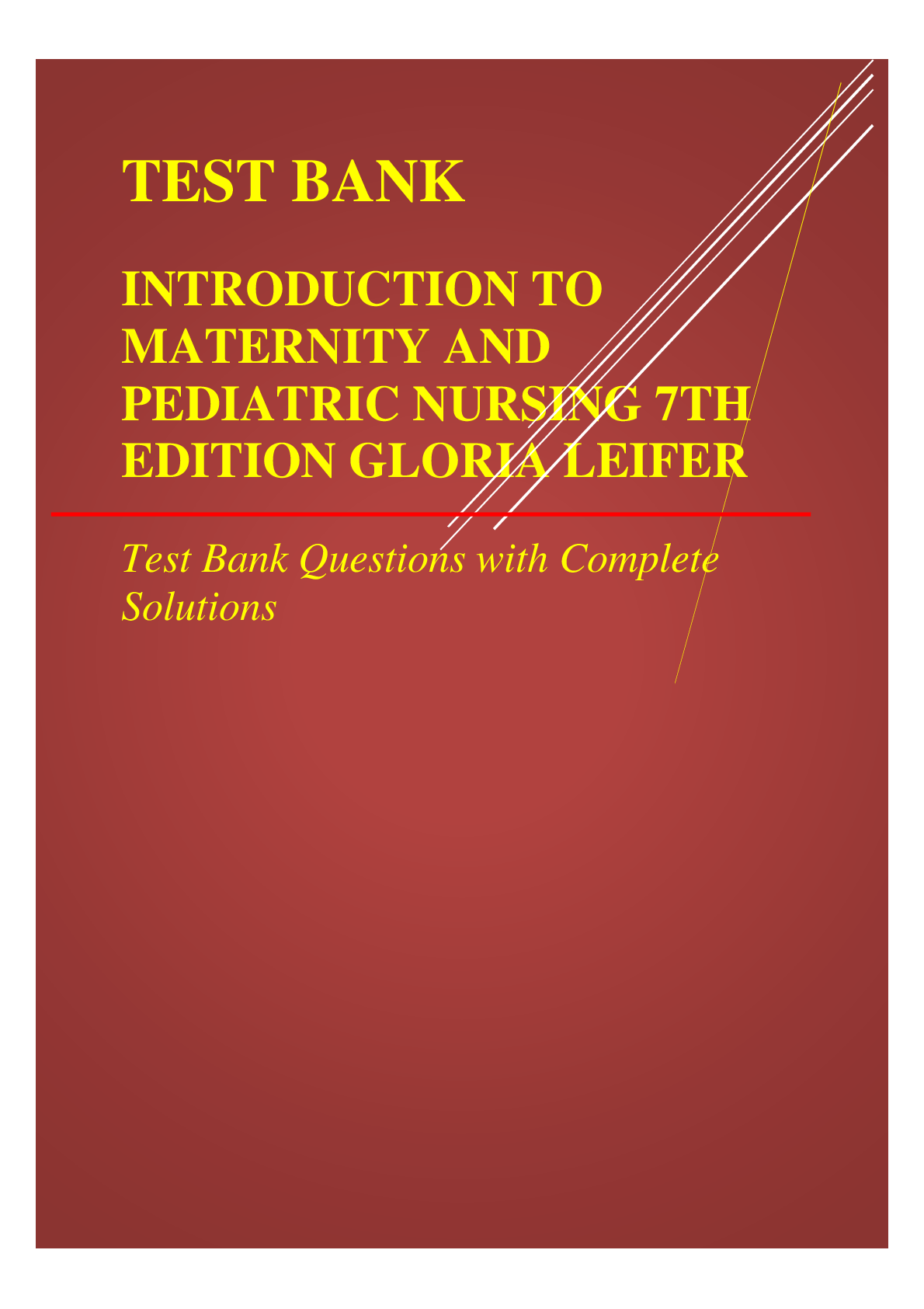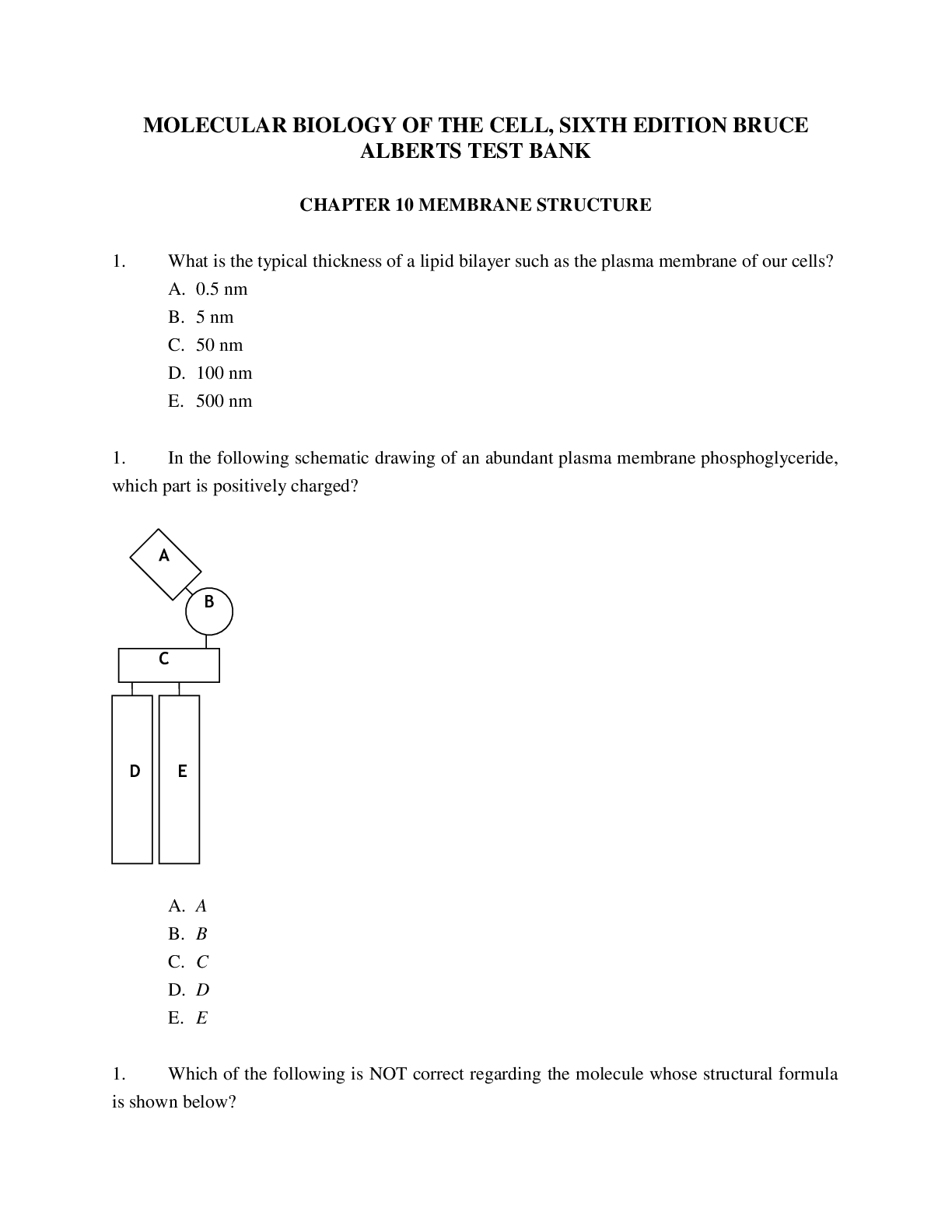Biology > QUESTIONS & ANSWERS > CHAPTER 05 DNA REPLICATION REPAIR, AND RECOMBINATION MOLECULAR BIOLOGY OF THE CELL SIXTH EDITION BRU (All)
CHAPTER 05 DNA REPLICATION REPAIR, AND RECOMBINATION MOLECULAR BIOLOGY OF THE CELL SIXTH EDITION BRUCE ALBERTS TEST BANK QUESTIONS WITH ANSWER KEY
Document Content and Description Below
1 Which of the following is correct regarding the mutation rate of genomic DNA in different organisms? A. Human cells have a much higher mutation rate compared to bacteria when the rate is normalized... to a single round of replication over the same length of DNA. B. Mutation rates limit the number of essential genes in an organism’s genome. C. Mutations in the somatic cells cannot be lethal. D. Even if the mutation rate was 10 times higher than its current value, germ-cell stability in humans would not have been affected. E. All of the above. 2 The mutation rate in bacteria is about 3 nucleotide changes per 10 billion nucleotides per cell generation. Under laboratory conditions, bacteria such as Escherichia coli can divide and double in number about every 40 minutes. If a single Escherichia coli cell is allowed to exponentially divide for 10 hours in this manner, how many mutations would you expect to observe on average in the genome (4.5 million nucleotide pairs) of each of the resulting bacteria compared to the original cell? Assume all mutations are neutral; that is, they do not affect the cell- division time. A. Less than 0.001 B. About 0.02 C. One or two D. About 10 E. About 100 3 On average, errors occur in DNA synthesis only once in every ten billion nucleotides incorporated. Which of the following does NOT contribute to this high fidelity of DNA synthesis? A. Complementary base-pairing between the nucleotides B. “Tightening” of the DNA polymerase enzyme around its active site to ensure correct pairing before monomer incorporation C. Exonucleolytic proofreading by the 3′-to-5′ exonuclease activity of the enzyme to correct mispairing even after monomer incorporation D. A strand-directed mismatch repair system that detects and resolves mismatches soon after DNA replication E. All of the above mechanisms DO contribute to the fidelity. 4 The nuclear DNA polymerases in human cells … A. polymerize about 1000 nucleotides per second during DNA replication in vivo. B. are incapable of 3′-to-5′ exonuclease activity. C. are capable of 3′-to-5′ DNA polymerase activity. D. have a single active site that is used for both polymerization and editing. E. are unable to initiate polymerization de novo (i.e. in the absence of a primer). 5 What is the main source of the free energy for the mechanical work performed by DNA helicases during DNA replication in our cells? A. The hydrogen-bonding energy in the DNA double helix B. Thermal energy in the nucleus C. ATP hydrolysis by the helicase D. The energy of SSB binding to single-stranded DNA E. ATP hydrolysis by DNA topoisomerases 6 During DNA replication in the cell, DNA primase makes short primers that are then extended by the replicative DNA polymerases. These primers … A. are made up of DNA. B. generally have a higher number of mutations compared to their neighboring DNA. C. are made more frequently in the leading strand than the lagging strand. D. are joined to the neighboring DNA by DNA ligase. E. provide a 3′-phosphate group for the DNA polymerases to extend. 7 DNA ligases are used in both DNA replication and repair to seal breaks in the DNA. But DNA damage can result in single- or double-strand breaks that are not normal ligase substrates. These need to be processed first before a ligase can act on them. One of the enzymes that is recruited to some of such breaks is called PNK. It has two separate activities on the DNA, both of which can help provide a canonical ligase substrate. Which of the following activities would you expect PNK to have in this context? A. 5′ kinase (phosphorylation of a free 5′-OH group) and 3′ kinase B. 5′ phosphatase (dephosphorylation to create a free 5′-OH group) and 3′ phosphatase C. 3′ kinase and 3′ phosphatase D. 5′ phosphatase and 3′ kinase E. 5′ kinase and 3′ phosphatase 8 Fill in the gap in the following paragraph using what you know about the activities of the proteins involved in DNA replication. “Mitochondrial DNA replication requires a set of proteins similar to those used for the replication of the nuclear genome. However, mitochondria lack a dedicated DNA ... and use the mitochondrial RNA polymerase instead.” 9 During DNA replication, the single-strand DNA-binding (SSB) proteins … A. are generally found more on the leading strand than the lagging strand. B. bind cooperatively to single-stranded DNA and cover the bases to prevent base- pairing. C. prevent the folding of the single-stranded DNA. D. bind cooperatively to short hairpin helices that readily form in the single-stranded DNA. E. All of the above. 10 This protein is present at every replication fork and prevents DNA polymerase from dissociating, but does not impede the rapid movement of the enzyme. Which of the following is true regarding this protein? A. It self-assembles onto DNA at the replication fork. B. It is assembled on DNA as soon as DNA polymerase runs into a double-strand region of DNA. C. Its assembly normally follows the synthesis of a new primer by the DNA primase. D. It disassembles from DNA as soon as DNA polymerase runs into a double-strand region. E. All of the above. 11 At the replication fork, the template for the lagging strand is thought to loop around. This looping would allow the lagging-strand polymerase to move along with the rest of the replication fork instead of in the opposite direction. The single-strand part of the loop is bound by the single- strand DNA-binding (SSB) proteins. As each Okazaki fragment is synthesized toward completion, how does the size of the loop change? What about the size of the SSB-bound part of the loop? [Show More]
Last updated: 1 year ago
Preview 1 out of 24 pages

Reviews( 0 )
Document information
Connected school, study & course
About the document
Uploaded On
Jul 08, 2021
Number of pages
24
Written in
Additional information
This document has been written for:
Uploaded
Jul 08, 2021
Downloads
0
Views
31

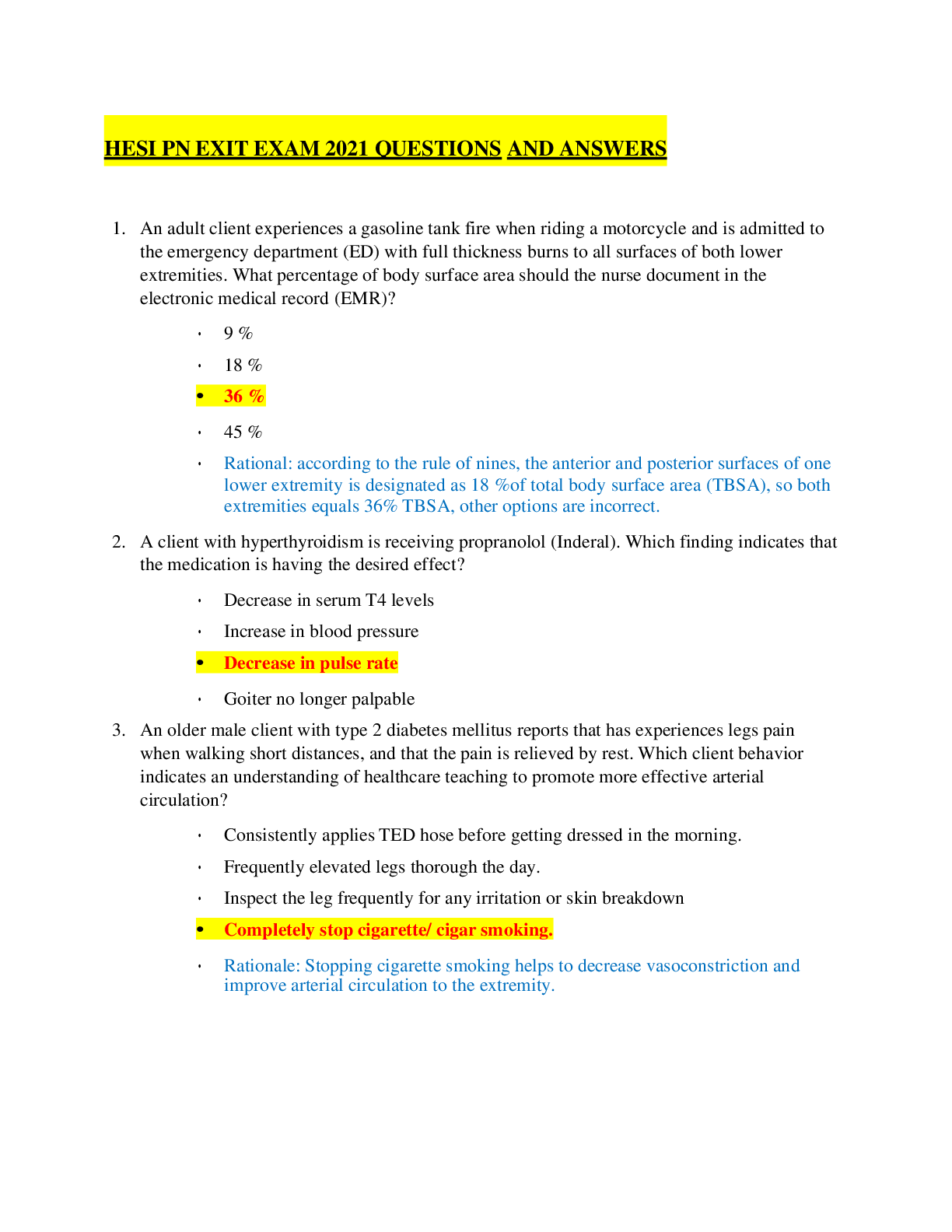




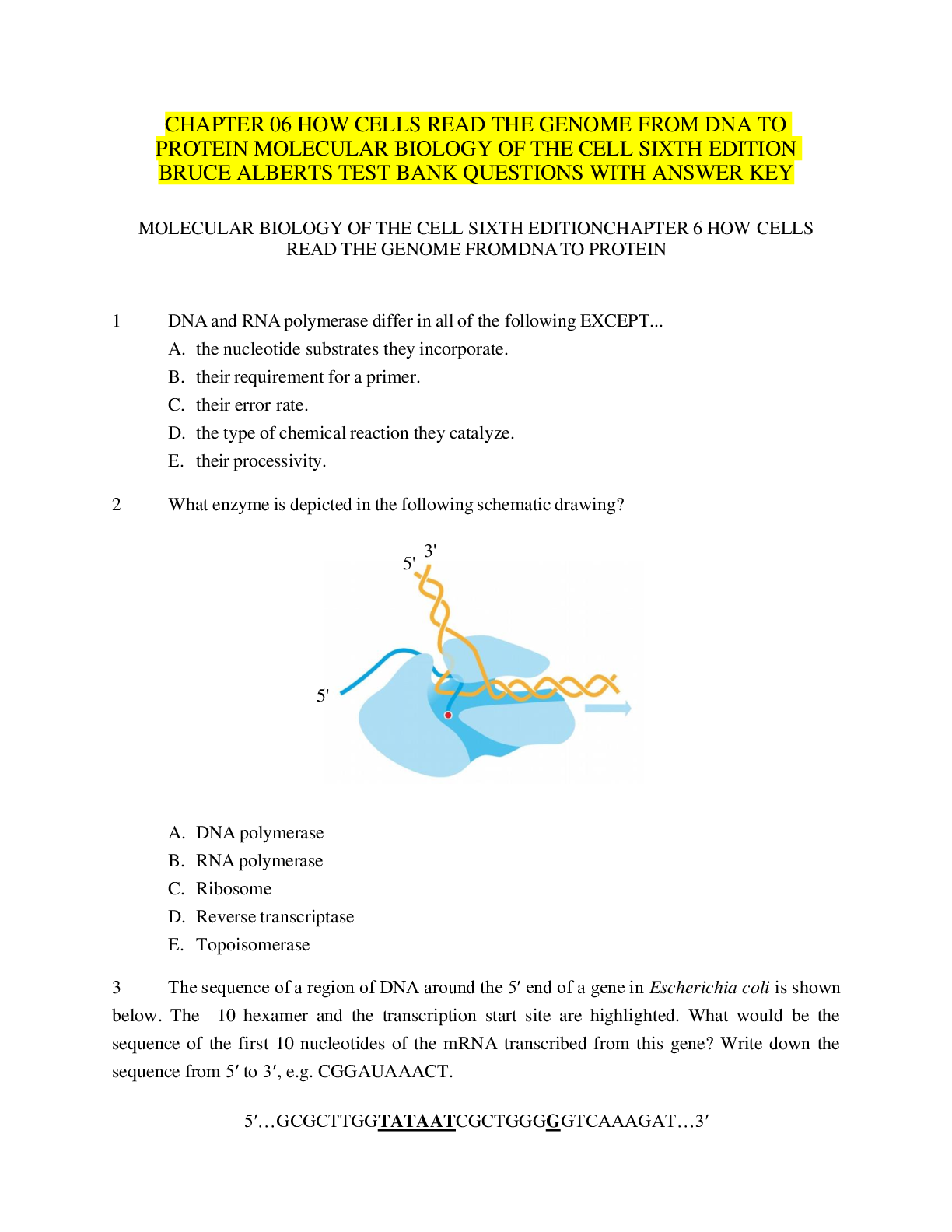

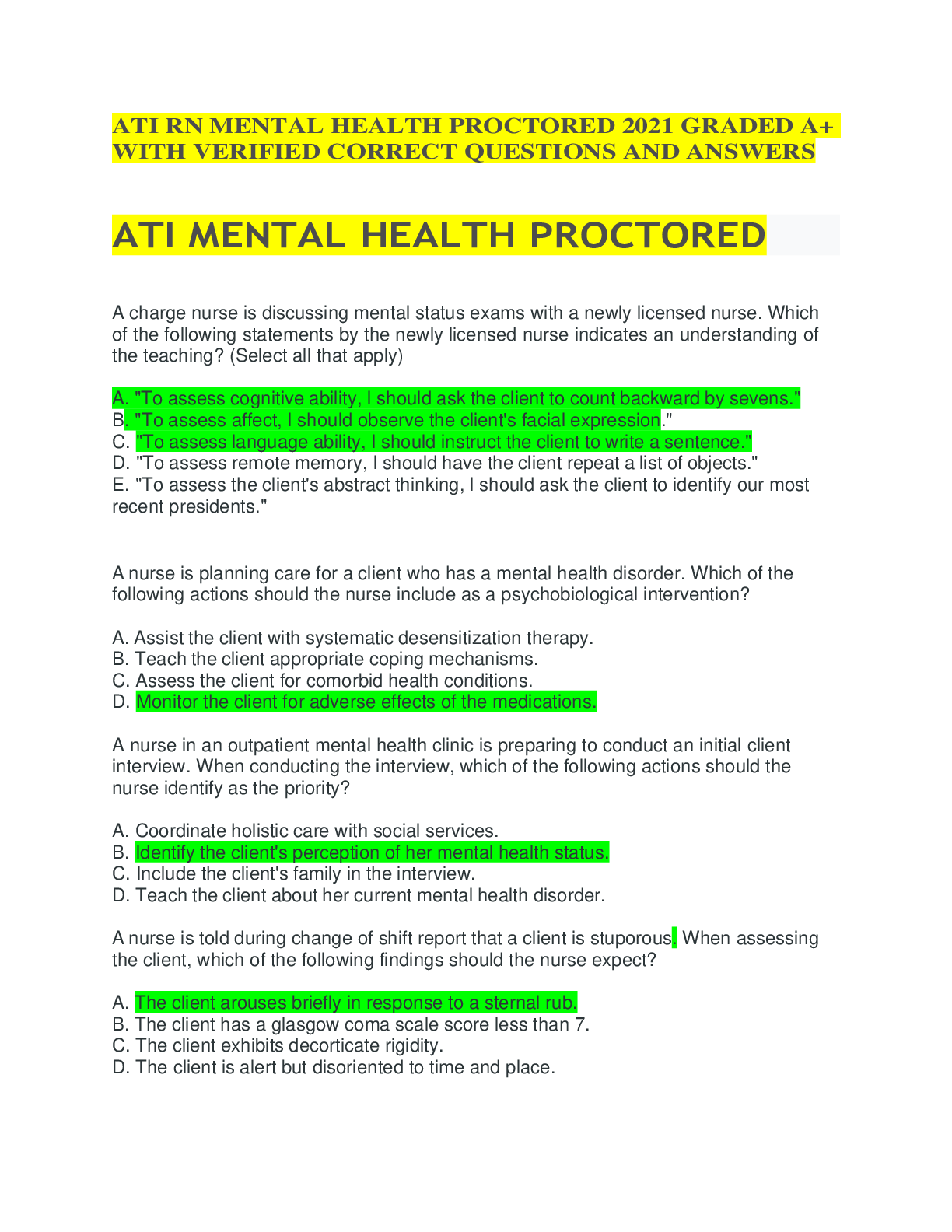
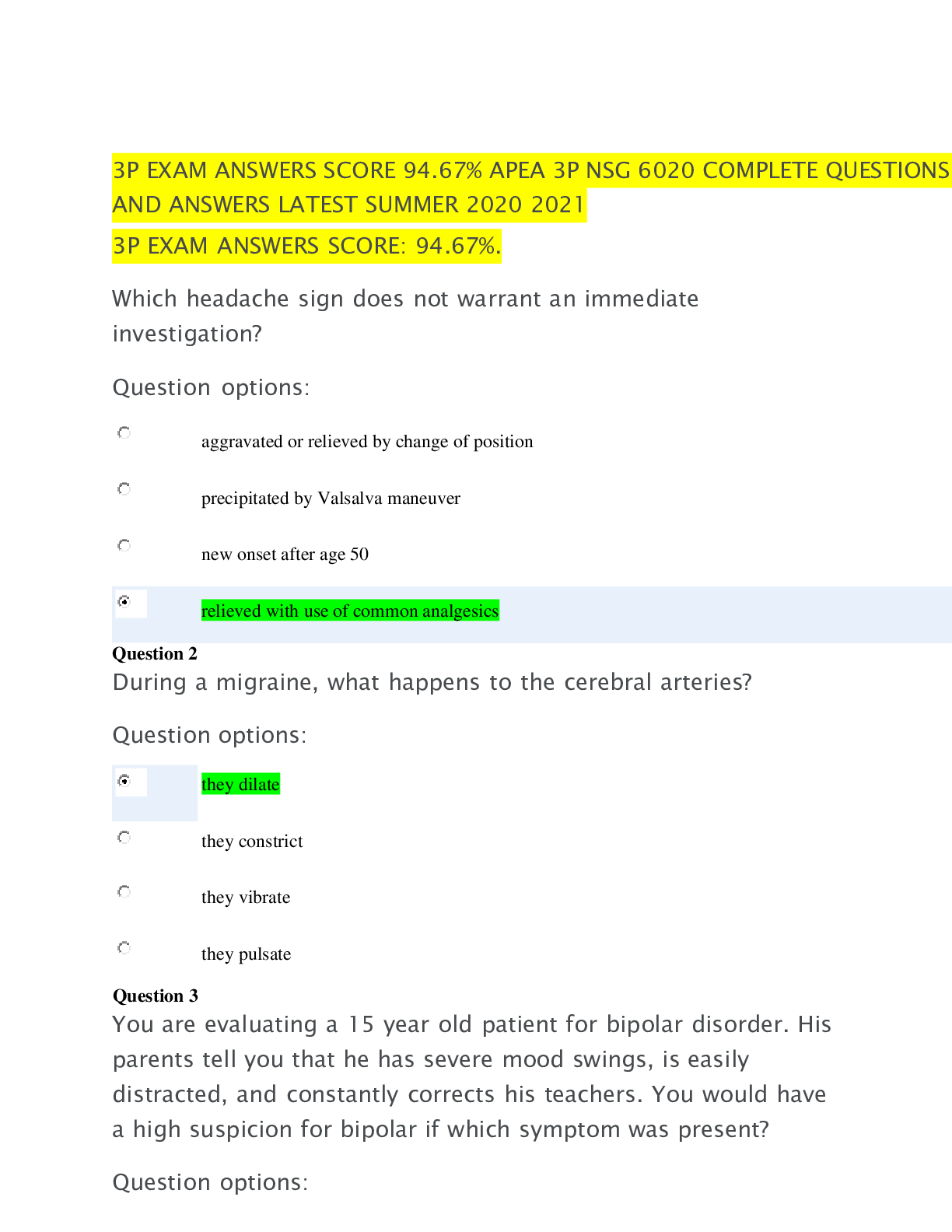


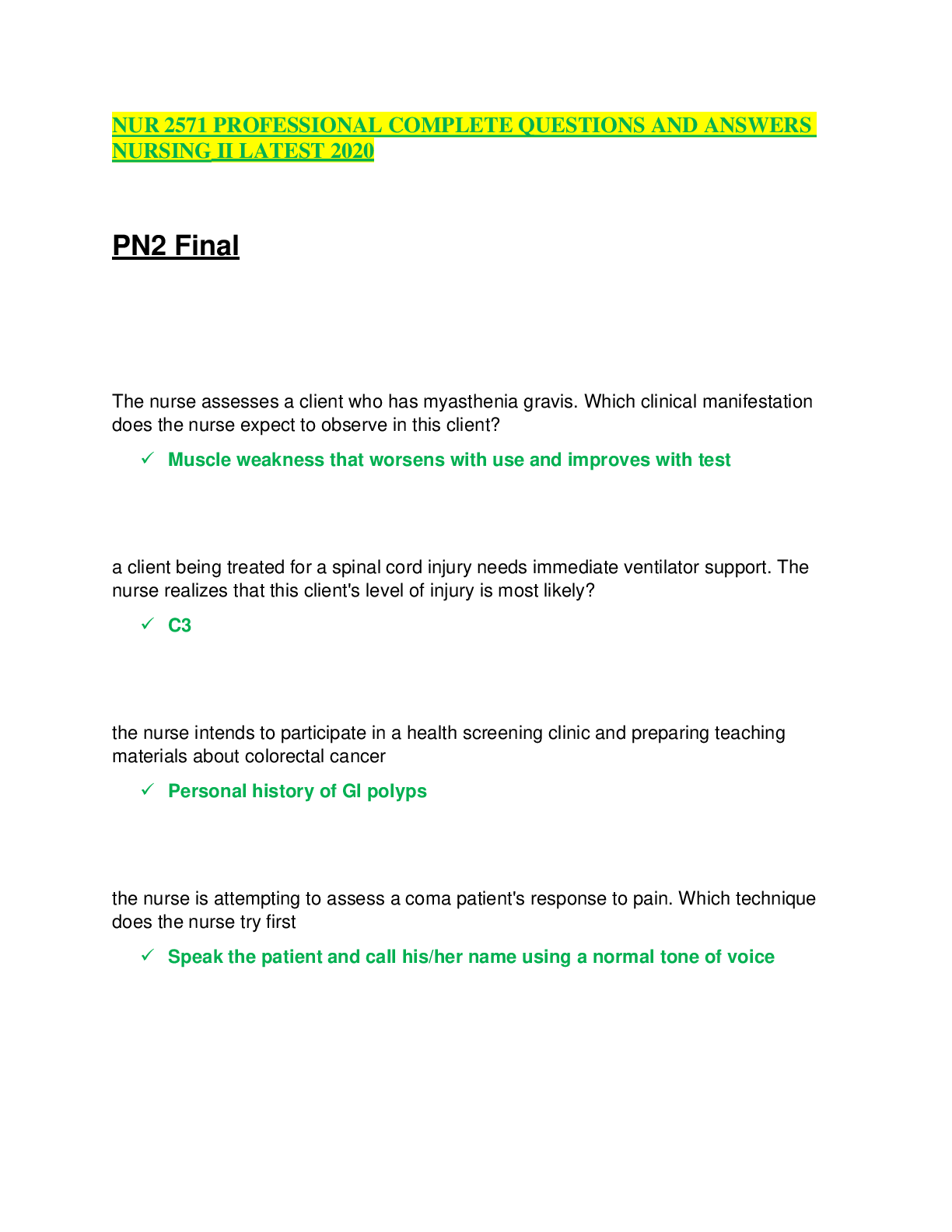
.png)
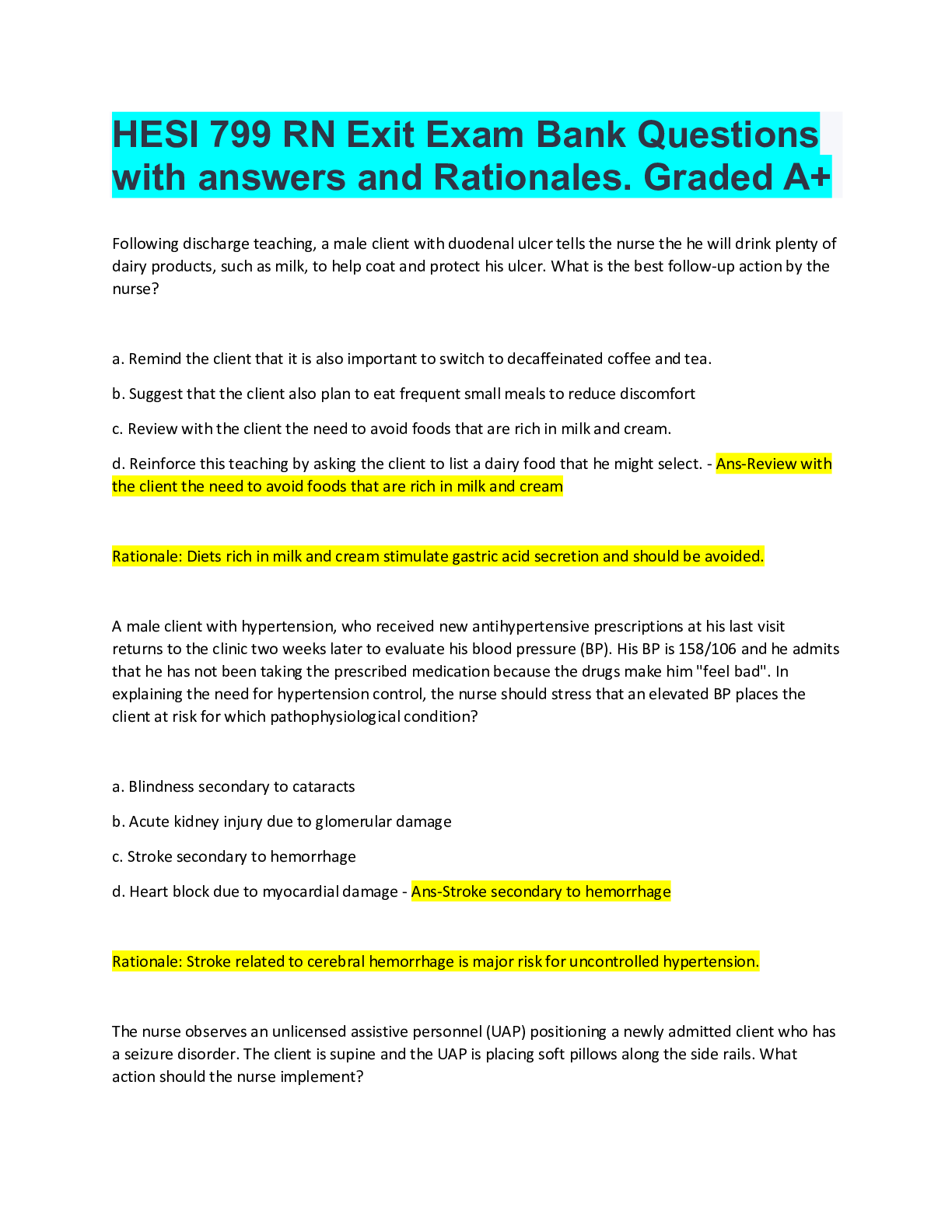

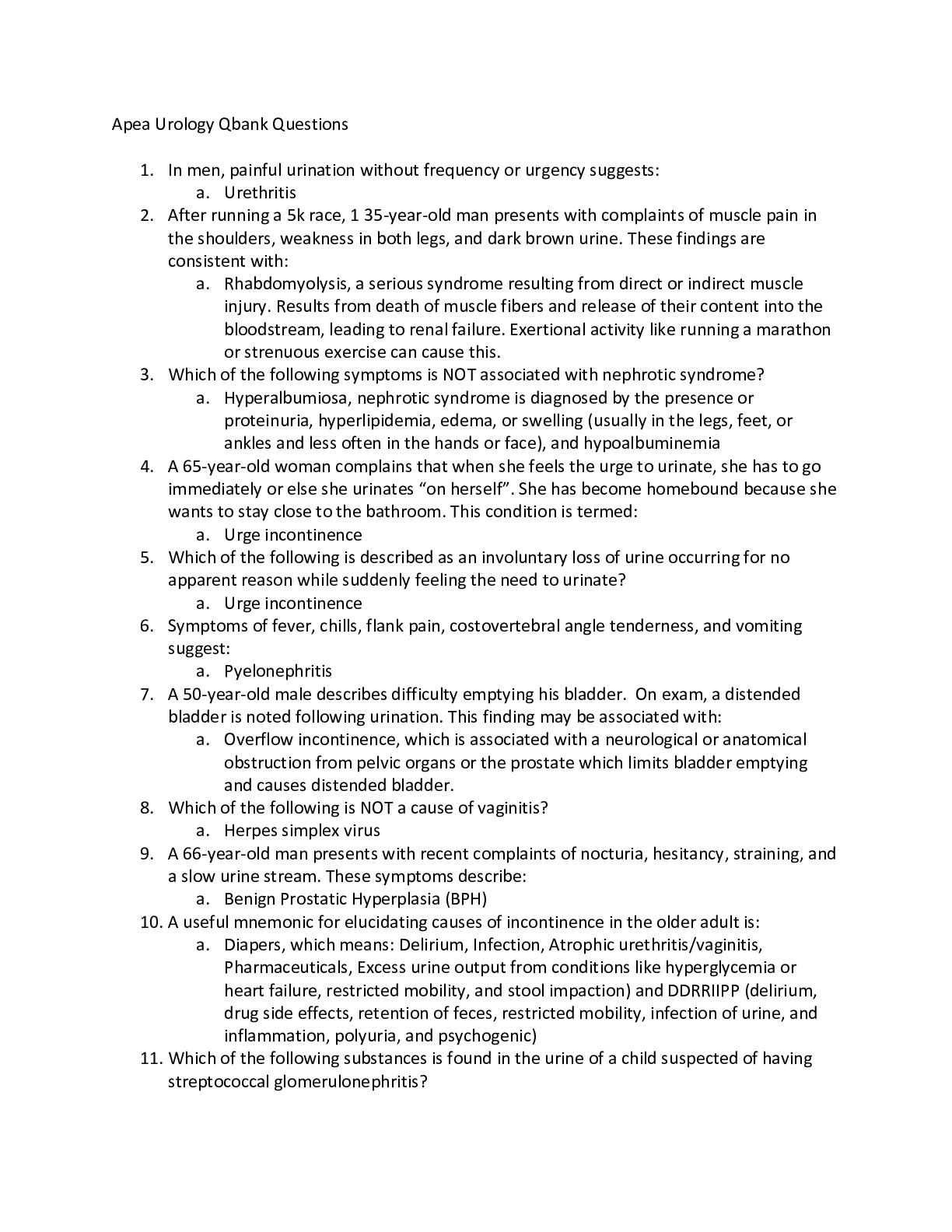
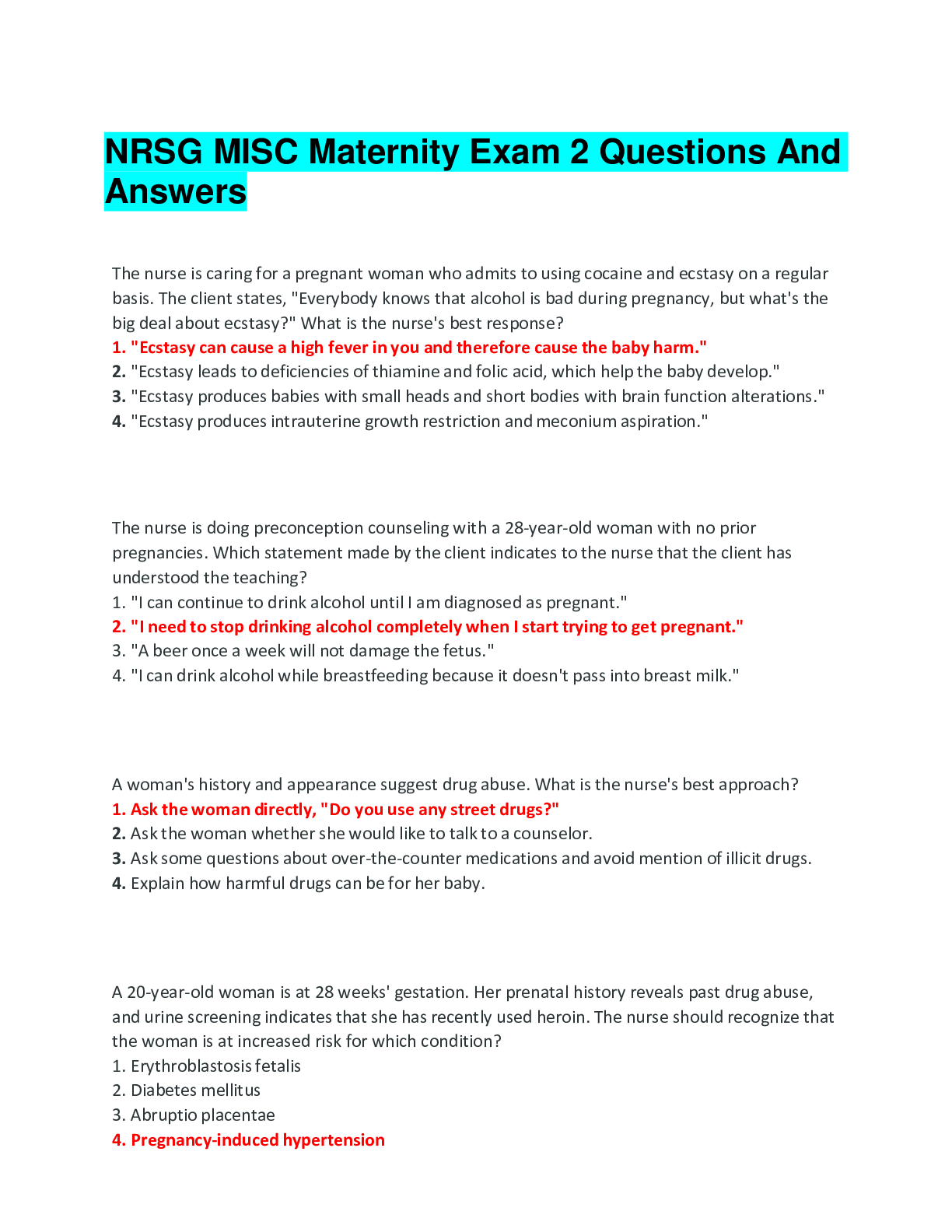
.png)





